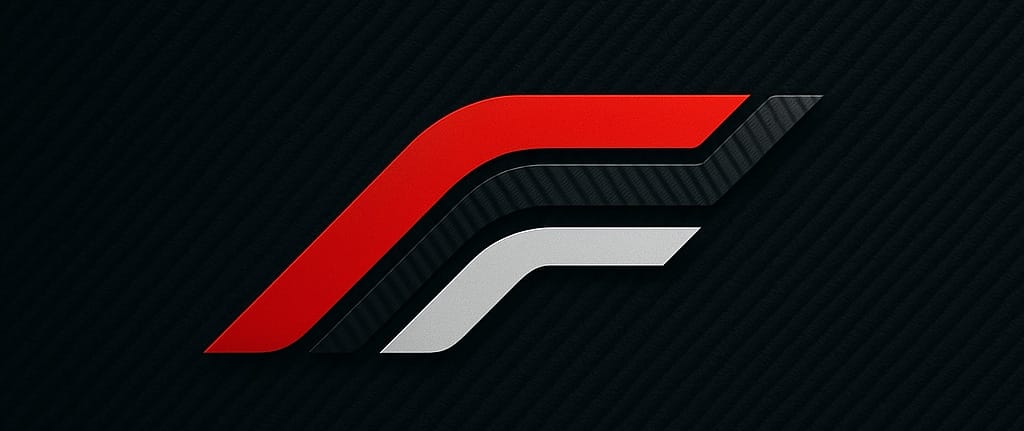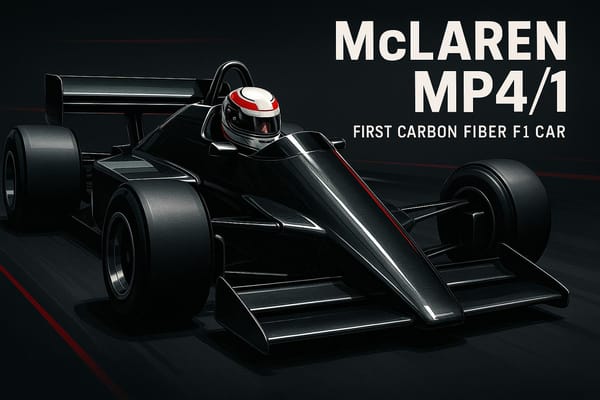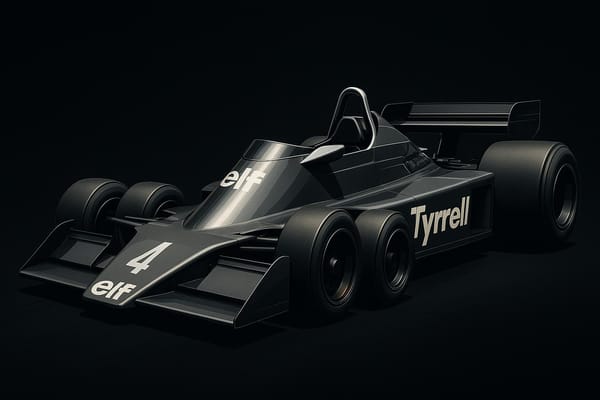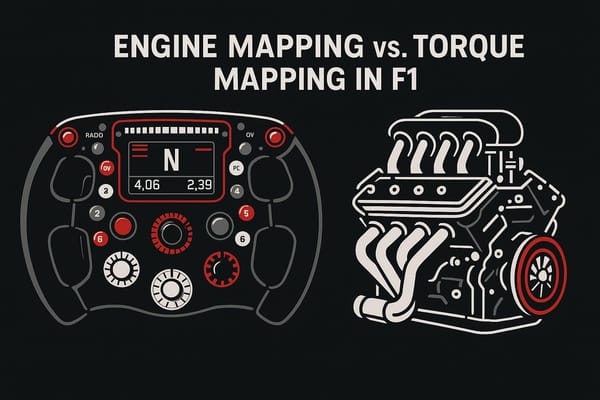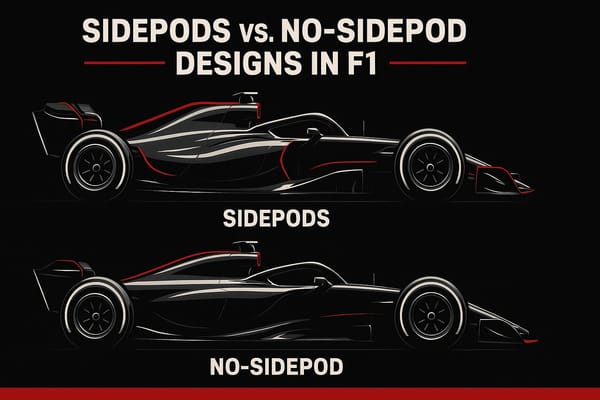Monaco Grand Prix Circuit Guide: The Prestige, Precision, and Pressure of F1’s Crown Jewel
Explore the Monaco Grand Prix, a fusion of prestige and technical challenges that makes it the ultimate test for F1 drivers.
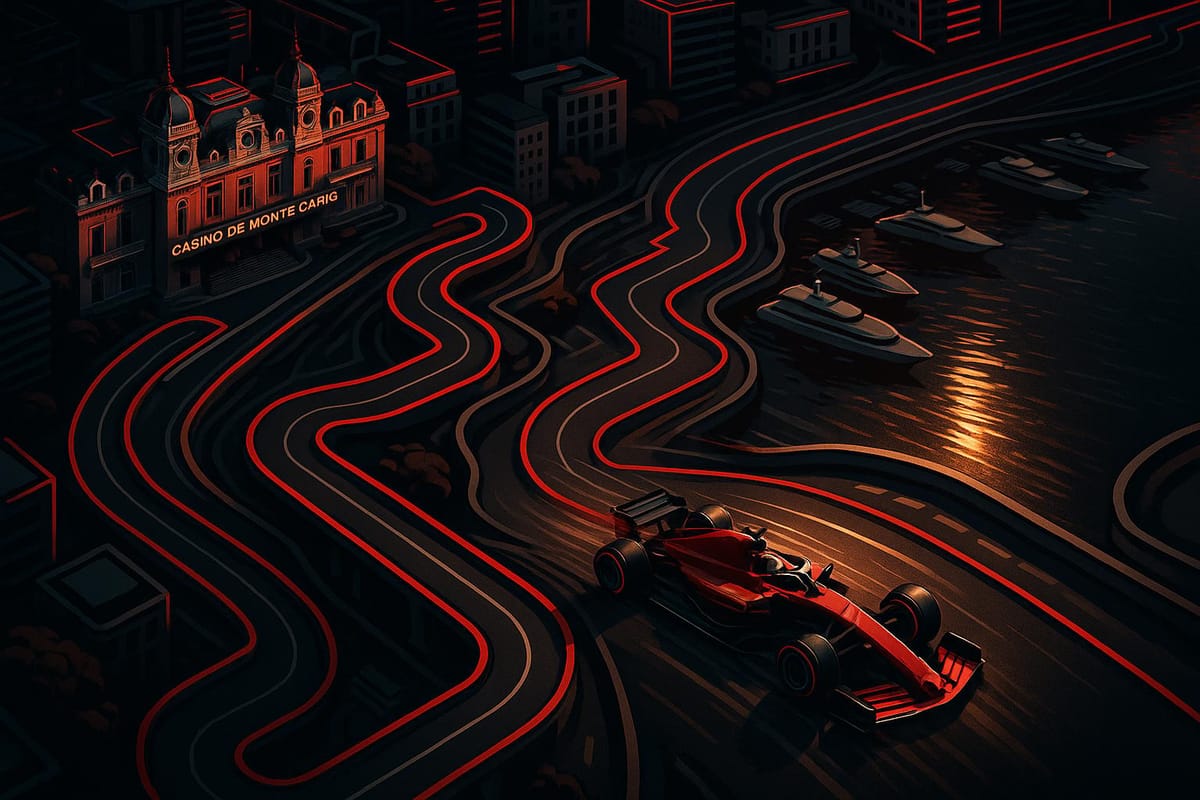
The Monaco Grand Prix is Formula 1's most iconic race, blending luxury, history, and intense technical challenges. Here's why it stands out:
- Prestige: Part of motorsport's Triple Crown alongside the Indianapolis 500 and 24 Hours of Le Mans, Monaco is the ultimate F1 prize.
- Unique Circuit: The 2.074-mile street track demands precision, with tight corners, elevation changes, and the slowest turn in F1.
- Historical Moments: Legendary drivers like Ayrton Senna (6 wins) and Graham Hill (5 wins) have dominated here. Charles Leclerc became only the second Monégasque winner in 2024.
- Driver Challenges: Mental focus, physical endurance, and flawless execution are non-negotiable on a circuit with no margin for error.
- Strategy: Overtaking is rare, making pit stops and Safety Car timing critical.
Monaco isn’t just a race - it’s a spectacle that tests the limits of drivers, teams, and cars, embodying the essence of Formula 1.
Monaco Grand Prix History
1929: The First Monaco Race
The Monaco Grand Prix made its debut on April 14, 1929, thanks to Anthony Noghès and the support of Prince Louis II. William Grover-Williams claimed victory in a Bugatti Type 35B, clocking an average speed of 80.194 km/h (49.8 mph). By 1933, the race had established itself as one of the Grandes Épreuves and introduced a groundbreaking change: grid positions were determined by practice times instead of a random draw. This innovation marked the beginning of Monaco's reputation for pushing the boundaries of motorsport.
Leading Drivers and Statistics
Throughout its history, Monaco’s tight and unforgiving circuit has been the ultimate proving ground for Formula One legends.
| Driver | Wins | Years |
|---|---|---|
| Ayrton Senna | 6 | 1987, 1989–1993 |
| Graham Hill | 5 | 1963–1965, 1968–1969 |
| Michael Schumacher | 5 | 1994–1995, 1997, 1999, 2001 |
| Alain Prost | 4 | 1984–1986, 1988 |
Graham Hill’s five wins in the 1960s earned him the nickname "Mr. Monaco," while Ayrton Senna’s unmatched six victories, including five consecutive triumphs from 1989 to 1993, remain a record. In 2024, Charles Leclerc joined Louis Chiron as the only Monégasque drivers to win their home race, with Chiron’s victory dating back to 1931.
Key Monaco Races
Monaco’s history is filled with unforgettable moments that highlight the race’s unpredictable nature.
In 1982, Alain Prost spun on a rain-soaked track, triggering a chaotic series of events. Riccardo Patrese spun, Didier Pironi and Andrea de Cesaris ran out of fuel, and Patrese ultimately managed to restart his car and pull off a surprise victory.
"Suddenly I realised that I was no longer driving the car consciously. I was driving it by a kind of instinct, only I was in a different dimension."
The 1996 Grand Prix saw Olivier Panis pull off an incredible win after starting 14th on the grid - the lowest starting position for a Monaco winner since 1955. Only three cars crossed the finish line that year. Another dramatic moment came in 2006 when Michael Schumacher’s controversial qualifying incident at Rascasse earned him a grid penalty.
Monaco’s allure lies in its relentless challenge, where precision and nerves of steel are non-negotiable. The race has endured interruptions, including a pause from 1938 to 1947 due to financial issues and World War II, and a cancellation in 2020 during the COVID-19 pandemic - the first since 1954.
A-Z GUIDE to the MONACO F1 GRAND PRIX
Track Analysis: Circuit de Monaco
Monaco's racing circuit is steeped in history and known for its technical challenges. A closer look at each sector reveals the intricate demands placed on drivers.
Section 1: Sainte-Dévote to Casino
The circuit kicks off at Sainte-Dévote (Turn 1), a sharp right-hand corner just 492 feet from the starting line. It immediately tests the drivers' precision and composure. From there, they climb through Beau Rivage (Turn 2), a steep uphill stretch leading to Massenet (Turn 3). At this blind-entry corner, drivers must commit fully before the turn even comes into view, all while reaching speeds of up to 175 mph. Racing analyst Mark Hughes captures the artistry required here:
"More than at any other stretch of track on the calendar, this 3 seconds' worth sees the drivers as artists, each improvising their own unique picture."
The section wraps up at Casino Square (Turn 4), where drivers tackle a right-hander before heading downhill toward Mirabeau. The combination of elevation shifts and blind corners tests not only the drivers' focus but also the car's setup. From here, the circuit transitions into an even more intricate segment.
Section 2: Mirabeau to Tunnel
This part of the track is home to some of Monaco's most technically demanding corners. It begins at Mirabeau Superior (Turn 5) and flows into the iconic Hairpin (Turn 6), the slowest corner in Formula 1. The Hairpin has seen its fair share of drama, such as during the 2000 Monaco Grand Prix, when Jenson Button nudged Pedro de la Rosa into a spin, creating a traffic jam that ensnared over half the field. Incidents like this highlight just how unforgiving Monaco's layout can be.
From the Hairpin, the track winds through Mirabeau Inferior (Turn 7) and Portier (Turn 8) before entering the Tunnel (Turn 9). Here, drivers face the unique challenge of transitioning from the dimly lit tunnel to the glaring sunlight outside, all while maintaining their focus and rhythm.
Section 3: Swimming Pool to Finish
After the Tunnel, the final sector begins with the Nouvelle Chicane (Turns 10/11), one of the few spots on the circuit where overtaking is even remotely possible, despite Monaco's reputation for limited passing opportunities. Next comes Tabac (Turn 12), a tight and tricky corner that demands flawless execution.
The Swimming Pool complex (Turns 13/14/15/16) follows, requiring razor-sharp timing as drivers weave through a series of fast chicanes. This section is all about maintaining momentum without overstepping the limits. Finally, the lap concludes with La Rascasse (Turn 17) and the Antony Noghès corner (Turn 18), the latter named after the founder of the Grand Prix.
Stretching 3.337 kilometers (2.074 miles) and featuring 19 corners, the Circuit de Monaco demands absolute focus from start to finish. As Lewis Hamilton once admitted:
"Usually after that race, you are mentally destroyed for a good couple of days."
Racing Requirements at Monaco
Car Setup Requirements
For Monaco, a car setup prioritizing grip and precision is non-negotiable. Teams configure cars with maximum downforce to handle the circuit's tight, twisting corners. Given the unique demands of this street track, several key adjustments are necessary.
A softer suspension is used to absorb the bumps and uneven surfaces, ensuring the tires maintain contact with the road. Engineers also raise the car's ride height to avoid scraping the underbody, especially at tricky spots like the exit of Casino Square (Turn 4). To manage power delivery and minimize wheel spin - critical on this rear-limited track where the rear tires wear out faster - teams reduce the on-throttle differential. These setup tweaks, combined with well-planned tire strategies, are vital to navigating Monaco's unforgiving layout.
Tire and Pit Stop Planning
Pit stops at Monaco are a high-stakes game, with each one costing around 21 seconds. Teams typically schedule a stop between laps 20 and 26, balancing this with the goal of extending tire durability to last up to 40 laps. Because overtaking on this circuit is notoriously difficult, track position often outweighs outright speed, making the timing of pit stops absolutely critical.
Safety Car Impact
The Safety Car (SC) adds another layer of complexity to Monaco's race strategy. During SC periods, tire temperatures can plummet by as much as 40°C, significantly reducing grip. This creates a major challenge for teams and drivers alike.
"The Monaco Grand Prix is all about traffic. The teams' job is to manage the pit stop windows and ensure the strategy is flexible enough to deal with a range of Safety Car and traffic eventualities." - Bernie Collins, Former Aston Martin Head of Race Strategy
SC laps are also slower, running about 60% longer than normal racing laps. This requires teams to carefully manage not just tire temperatures but also brake systems. Strategy teams are constantly assessing SC scenarios. As a member of the Mercedes-AMG PETRONAS F1 Team explains:
"The strategy group is in a continuous evaluation process, trying to anticipate what would happen if the Safety Car were to come out two, three or even five laps down the line." - Mercedes-AMG PETRONAS F1 Team
To stay competitive, teams often keep their drivers within a "Safety Car window." This positioning allows them to take advantage of an SC period for a well-timed pit stop, which can make all the difference in a race where passing other cars is nearly impossible.
Driver Challenges at Monaco
Mental Requirements
The Monaco Grand Prix is a true test of mental endurance, demanding unwavering focus from drivers over the course of 78 grueling laps. Nelson Piquet once compared racing at Monaco to "riding a bicycle around your living room", a vivid analogy that underscores the razor-sharp concentration needed to tackle the circuit’s tight, unforgiving streets. With its relentless sequence of corners, the track offers virtually no time for drivers to catch their breath, making mental fatigue a constant threat. And when the mind is pushed to its limits, the body must keep up.
Physical Demands
Monaco’s track isn’t just mentally taxing - it’s a punishing physical ordeal. Drivers endure lateral forces that can reach up to 6G and braking forces as high as 5G. Under these conditions, the weight of a driver's helmet effectively multiplies from 7kg to a staggering 35kg. Add to this the searing cockpit temperatures, which often exceed 50°C (122°F), and it’s no surprise that drivers typically lose between 3 and 4kg (6.6–8.8 lbs) of fluid during the race. Throughout the event, heart rates hover at 80% of their maximum, while the uneven track surface intensifies the physical toll. These conditions ensure that even the slightest mistake can have amplified consequences.
Error Consequences
In Monaco, there’s no margin for error. A single misjudgment can spell disaster, as demonstrated during the 2024 Monaco Grand Prix. Esteban Ocon’s collision with teammate Pierre Gasly not only ended in a 10-second penalty but also resulted in a five-place grid drop for the next race.
"It's sad, this kind of incident. It's exactly what we didn't want to see. And there will be the appropriate consequences."
- Bruno Famin, Alpine Team Principal
With its narrow track and minimal run-off areas, Monaco offers no room for recovery. The stewards of the Grand Prix were clear in their assessment of Ocon’s move:
"It was clear to us that the collision was caused solely by the overly ambitious overtaking attempt, from too far back"
In Monaco, even the smallest misstep can have far-reaching consequences, jeopardizing team dynamics, championship standings, and, sometimes, a driver’s career trajectory.
Conclusion: Monaco's Place in F1
Monaco's Lasting Impact
The Monaco Grand Prix stands as the crown jewel of Formula One, merging its storied prestige with an unmatched technical challenge. Its exceptional status - marked by unique privileges like exemptions from hosting fees and standard race distance rules - solidifies its position as an irreplaceable fixture in the sport . For decades, under the guidance of Monaco's royal family spanning three generations, this race has epitomized the very best of motorsport.
"Of course, there is only one Monaco. It's the pinnacle of the calendar and arguably the most famous race in the world, up there with the Indianapolis 500 and the 24 Hours of Le Mans."
Monaco's Essential Role
Monaco continues to push the limits of what Formula One demands, blending its rich history with challenges that test every facet of the sport. As explored earlier, the circuit’s tight corners and unforgiving layout require absolute precision from drivers, engineers, and strategists. Here, even the smallest error can have massive consequences.
"Monaco is nothing like any other track on the calendar. It's almost a reverse challenge to all of the engineering minds in Formula 1. You take this fabulous, technological, spacecraft-like race car, and you have to totally rebuild it, rethinking it for the slower speeds and tight corners of Monaco."
This unique combination of technical demands and historical significance has given rise to countless unforgettable moments in F1 history. Bathed in the Mediterranean sun, Monaco continues to symbolize the ultimate test of skill, strategy, and tradition, embodying the essence of Formula One like no other venue.
FAQs
Why is overtaking so challenging at the Monaco Grand Prix, and how do teams adapt their strategies to overcome it?
Overtaking at the Monaco Grand Prix is famously challenging, thanks to the track’s narrow, twisty design. With its tight corners and a noticeable lack of long straights, drivers have very few chances to make a move - especially with today’s wider, faster Formula 1 cars.
Because of this, teams put a huge emphasis on qualifying performance to lock in a strong starting position. Securing track position early is critical. Once the race begins, pit stop strategy becomes the main weapon in a team’s arsenal. Carefully timed undercut or overcut maneuvers can make all the difference, as a perfectly executed stop often provides one of the rare opportunities to gain positions on this notoriously tricky circuit.
Why is the Monaco Grand Prix considered one of the most challenging circuits in Formula 1?
The Monaco Grand Prix is famous for being one of the toughest challenges in Formula 1. Its narrow streets, tight corners, and close barriers leave drivers with absolutely no room for mistakes. Passing another car is almost unheard of, which makes qualifying one of the most crucial parts of the weekend. With no runoff areas, even the smallest slip-up can spell disaster, requiring drivers to maintain incredible precision and focus from start to finish.
What sets Monaco apart is its demanding layout. Drivers face sharp hairpins, tricky elevation changes, and high-speed sections that require flawless execution. These elements combine to create a race that pushes both technical skill and mental stamina to their limits, making it a true proving ground for the best in the sport.
What makes the Monaco Grand Prix one of the most prestigious events in Formula 1?
The Monaco Grand Prix stands as a symbol of prestige, steeped in a legacy that stretches back to 1929. Set in the heart of Monte Carlo, this legendary event is more than just a race - it's a spectacle of luxury and high-performance motorsport. Every year, it draws a dazzling mix of celebrities, royalty, and global attention, making it a highlight on the Formula 1 calendar.
What truly sets Monaco apart is its iconic location. The historic streets of the principality, framed by stunning scenery, offer a striking blend of charm and opulence. Known as a playground for the wealthy, Monaco provides a backdrop like no other. Pair that with the intense challenge of its narrow, twisting circuit, and you have a race that’s not just a test of skill but a crown jewel in the world of Formula 1.
